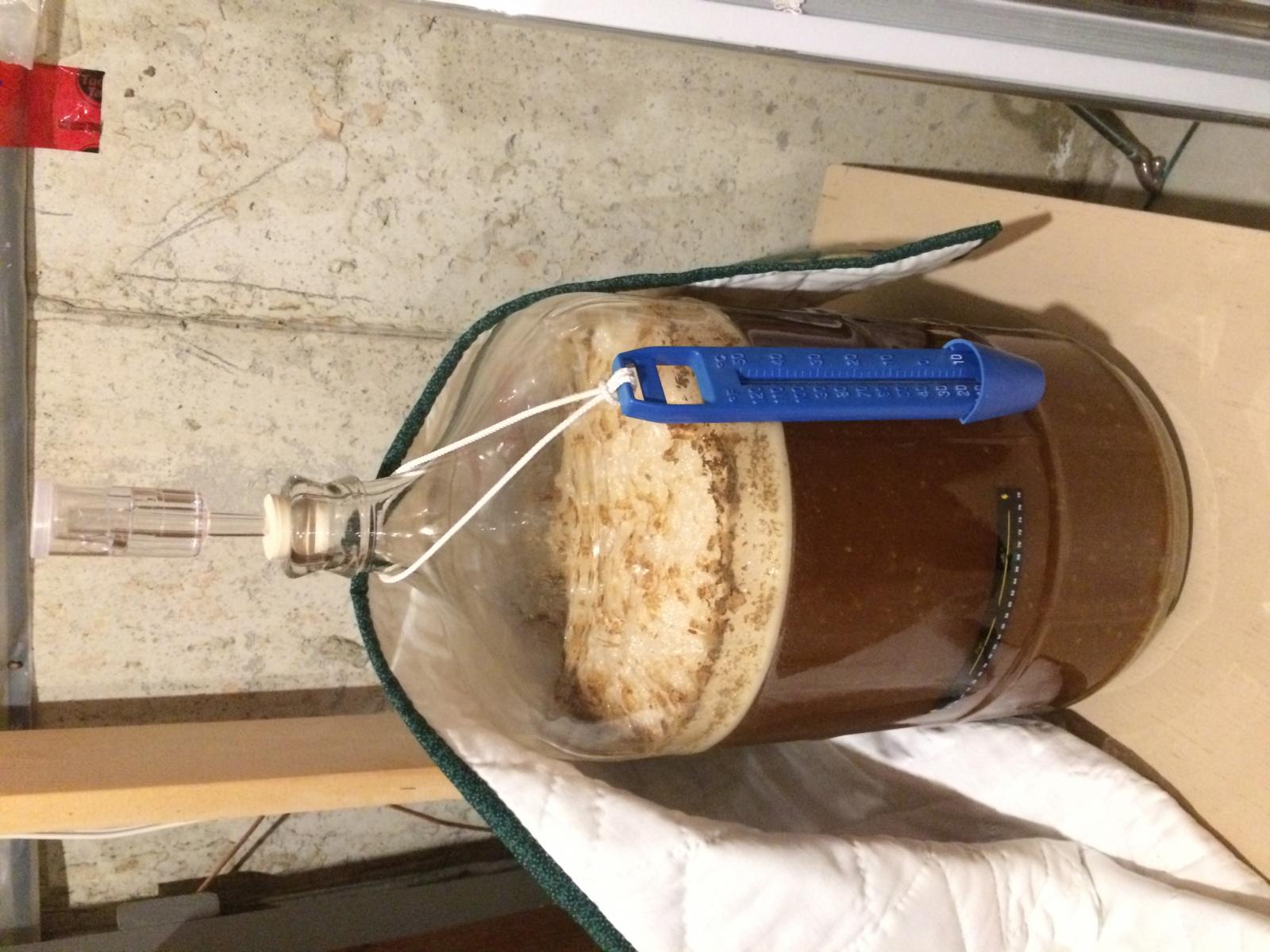Whatsupbrew
Active Member
Hey all,
Joined the forum a couple days ago, been reading lots, watching the vids etc etc.. and finally picked up some gear today, and a recipe, hoping to brew tomorrow. Thought I'd post my setup and the recipe, ask a question or two and see if anyone has any advice. Keep in mind I'm brand spanking new at this and have zero experience.
I'm jumping right into partial mash. First recipe is a Harp style beer.
Steep cara helles grains for 20 minutes at 158'F (in 5 gals)
Boil 2 litres PME
28grams of Willamette hops for 60 mins
28grams of Fuggles hops for last 4 mins
Cool and yeast is Lallemand Dry-97
Just curious if anyone has any input on the steep temp / time. Is 158' a little high?
My setup is 8 gallon brew kettle with a ball valve, and thermometer mounted, plastic bucket for primary and carboi for secondary. I figure 7 days in the bucket, 7 days in carboi should do it?
I'm pretty comfortable with getting into the process, my biggest question has to do with cooling the wort. I was going to ice bath the whole kettle, then when its ready to dump into the bucket i was just going to open the valve and let it pour in hoping it helps with the aeration. That or pour it right into the bucket after the boil and cool it in the bucket then pitch yeast...but Im curious if that way will just increase the potential for contamination?? or is there an aeration problem??
As far as cooling the wort is there a time I should be aiming for? 1 hour? 30 mins? 4 hours? At what point should I get worried?
Thanks for any help, tomorrow I'm just going to giver and learn the hard way.
Joined the forum a couple days ago, been reading lots, watching the vids etc etc.. and finally picked up some gear today, and a recipe, hoping to brew tomorrow. Thought I'd post my setup and the recipe, ask a question or two and see if anyone has any advice. Keep in mind I'm brand spanking new at this and have zero experience.
I'm jumping right into partial mash. First recipe is a Harp style beer.
Steep cara helles grains for 20 minutes at 158'F (in 5 gals)
Boil 2 litres PME
28grams of Willamette hops for 60 mins
28grams of Fuggles hops for last 4 mins
Cool and yeast is Lallemand Dry-97
Just curious if anyone has any input on the steep temp / time. Is 158' a little high?
My setup is 8 gallon brew kettle with a ball valve, and thermometer mounted, plastic bucket for primary and carboi for secondary. I figure 7 days in the bucket, 7 days in carboi should do it?
I'm pretty comfortable with getting into the process, my biggest question has to do with cooling the wort. I was going to ice bath the whole kettle, then when its ready to dump into the bucket i was just going to open the valve and let it pour in hoping it helps with the aeration. That or pour it right into the bucket after the boil and cool it in the bucket then pitch yeast...but Im curious if that way will just increase the potential for contamination?? or is there an aeration problem??
As far as cooling the wort is there a time I should be aiming for? 1 hour? 30 mins? 4 hours? At what point should I get worried?
Thanks for any help, tomorrow I'm just going to giver and learn the hard way.




































![Craft A Brew - Safale S-04 Dry Yeast - Fermentis - English Ale Dry Yeast - For English and American Ales and Hard Apple Ciders - Ingredients for Home Brewing - Beer Making Supplies - [1 Pack]](https://m.media-amazon.com/images/I/41fVGNh6JfL._SL500_.jpg)











